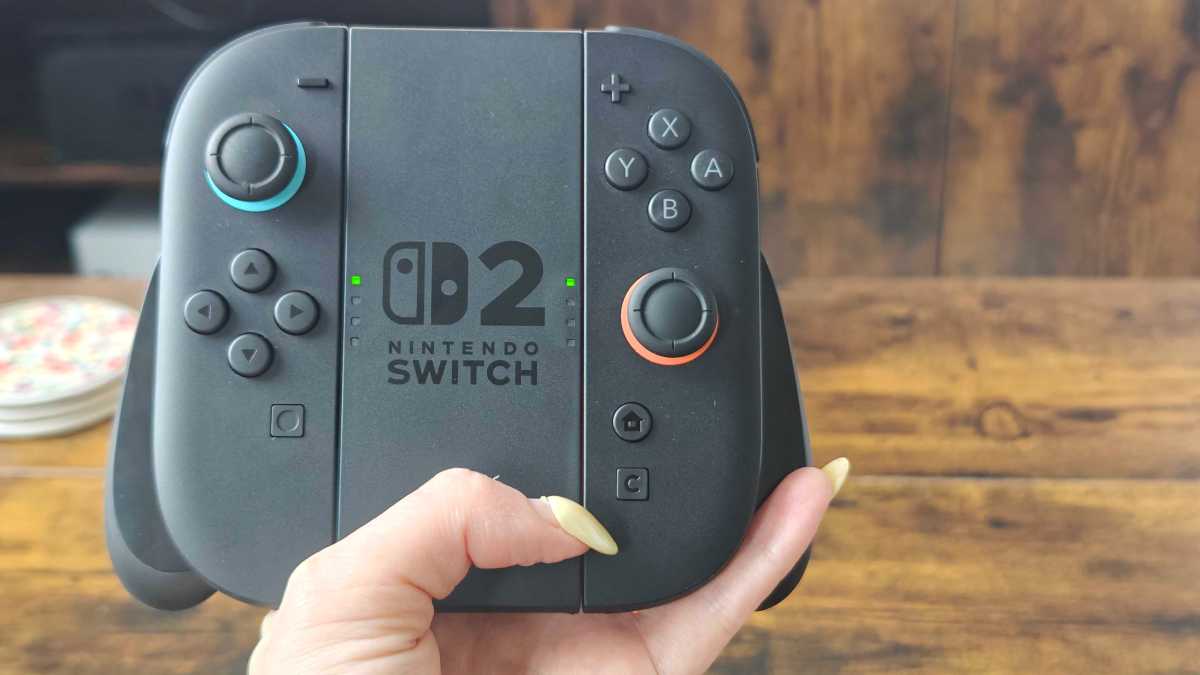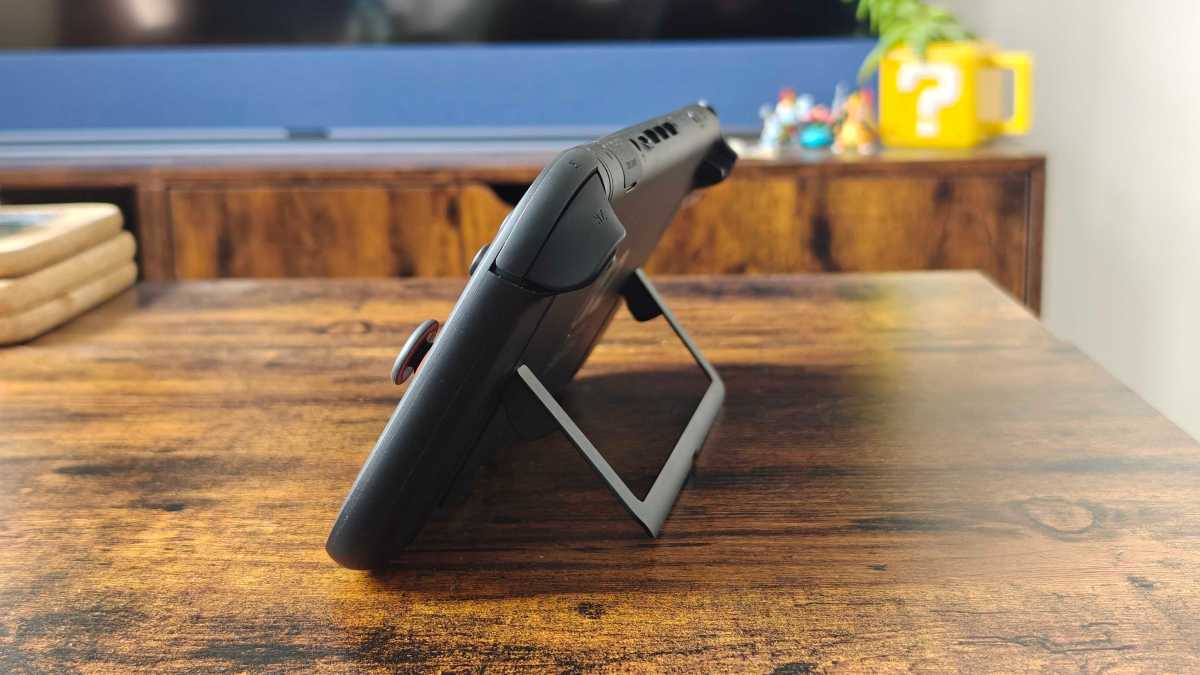Expert’s Rating
Pros
- Impressive graphics
- Snappy performance
- Quirky features
- Strong roster of games
- Meaningful design upgrades
Cons
- So-so battery life
- More powerful rivals on the market
- Joy-Cons are uncomfortable when used independently for a long time
Our Verdict
You will not regret either buying a Nintendo Switch 2 outright or upgrading from an original Switch. This is a true next-gen Console with only minor faults, and will likely be a bestseller for years to come.
Price When Reviewed
This value will show the geolocated pricing text for product undefined
Best Pricing Today
Price When Reviewed
$449.99
Best Prices Today: Nintendo Switch 2

$449

$449.99

$449.99

$449.99
The Nintendo Switch 2 is a true evolution of 2017’s original Nintendo Switch console, with a big step forward in graphics, controls and build quality.
It’s also much pricier than the original console was at launch, especially when you consider how much flagship games such as Mario Kart World cost. I can’t blame you if you’re on the fence.
But I’m happy to report that after nearly a fortnight with the console, I believe it’s something worth investing in.
If you’d like to read my unfiltered thoughts from unboxing the console and playing it with a fresh pair of eyes, then there’s a diary of my first three days with Switch 2, which I updated in real time.
Design & Build
- Bigger than the original Switch
- One colorway on launch
- Magnetic Joy-Cons
- New C button
The Switch 2 still retains the same core themes of this console line – namely, the hybrid handheld and docked nature, along with detachable Joy-Cons that can be used wirelessly when fully charged.
The Switch 2 is significantly larger than the original Switch. It’s 12.7mm taller and 30.48mm wider and weighs 534g with the Joy-Cons attached. While that is around 136g more than the original Switch, holding the two side by side doesn’t feel like a huge difference.

Hannah Cowton-Barnes / Foundry
The benefit of a larger design is a big, bright and beautiful glass display in handheld mode, though it’s not quite as travel-friendly. I use a third-party case from Nacon, which takes up a lot of space in my bag, but it feels like a worthy trade-off for the upgrades.
At launch, there’s just the one color – grey with orange and blue accents. There aren’t any additional Joy-Con shades to mix and match yet, but the great news is that you can still connect Joy-Cons from the Switch 1 with minimal hassle, albeit with some limitations.
While the lack of color choice may be a disappointment to some, I will say that this console looks sleeker and more premium than its predecessor. And besides, Nintendo is probably saving some special editions for later down the line… probably. Don’t hold me to that.
The benefit of a larger design is a big, bright and beautiful glass display in handheld mode
One big change is that a second USB-C port now sits on the top of the console, joining the one on the bottom. This means that you can charge the console in handheld mode while using the kickstand – a key oversight from the first edition. It’s also for connecting the camera accessory, but I’ll get to that later.
Speaking of which, the kickstand has had a serious revamp, now in a much sturdier U-shape that can be adjusted anywhere up to 150 degrees.
On top, you’ll find the power button, volume rocker and the improved game cartridge slot. On the bottom, there’s a microSD card express slot – note that this won’t support regular microSD cards. There’s also a new C button on both the console and controllers, which enables the funky GameChat function.

Hannah Cowton-Barnes / Foundry
The dock itself is a cleaner, rounder shape, and now features two additional USB 2.0 ports, which are useful when first connecting accessories such as the Pro Controllers. The console body feels slightly wobbly when docked, a similar issue to the first Switch. But you know what is a massive improvement? Those Joy-Cons, thanks to a handy little contraption called magnets, which are inside the main console itself.
By pressing a trigger on the back of the Joy-Cons, you simply pull them away. Then, whenever you put them close enough to the console, they’ll just snap right back into place. Gone are the days of finicky rails. They are ever so slightly wobbly when attached, but I never found this to interfere with gameplay.
If you’re worried about the Joy-Cons being put on the wrong way (either by a child or after a few bevvies), then don’t worry. Nintendo states in its Welcome Tour game that they can be put on the wrong sides and backwards – they just won’t charge properly if you do this.
While Nintendo has made the buttons more friendly for smaller hands, I’ve still found using a singular controller for games that require a lot of steering and pressing, such as Mario Kart World, slightly uncomfortable for long periods.

Hannah Cowton-Barnes / Foundry
Display, Graphics & Speakers
- 7.9-inch LCD display
- 4K support when docked
- Up to 120fps
- Punchy speakers
The Nintendo Switch 2 boasts a 7.9-inch screen, 1.7 inches larger than that of the OG Switch. While it’s LCD rather than OLED as hoped for, don’t let that put you off.
This display is a pleasure to use both in handheld and tabletop modes. Details are sharper thanks to the 1080p support (4K is reserved for when the console is docked and performance is smooth) and double the pixels of the first gen. Meanwhile, colors are vivid and pop beautifully on the screen.